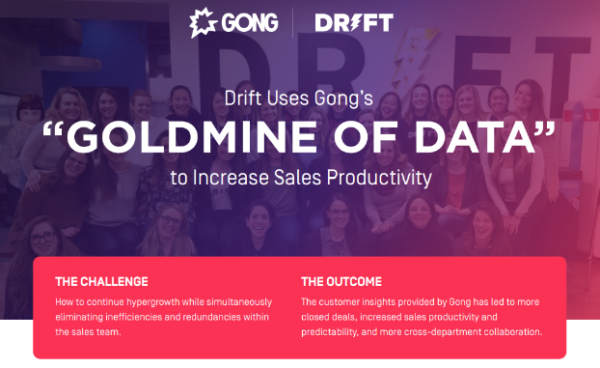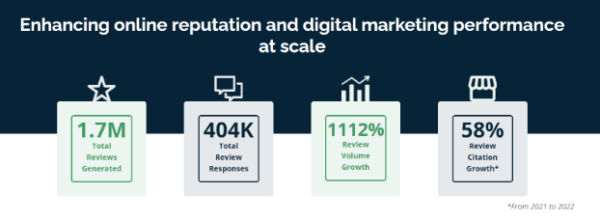When you hear a story, your brain reacts differently than it does when it’s fed facts and figures. For most people, stories are more memorable and engaging, and that fact is important to your marketing strategy.
Case studies are a way to market goods and services in a powerful narrative-based format. Discover more about implementing a case studies strategy below.
What is a case studies strategy?
A case studies strategy is the overall method you use to implement case study narratives into your marketing campaigns. Marketing agencies can use case studies to enhance agency brand identity, engage target audiences, and demonstrate expertise.
Why is a case studies strategy important to marketing agencies?
Almost 75 percent of successful marketers use case studies, and around half of software-as-service companies say case studies are a major sales driver (Forbes). Case studies are so important for marketing agencies because they let you:
- Build credibility and trust with your audience. Case studies are documented proof that you can do what you promise—and have, in fact, done it before. They help potential clients trust your agency and encourage them to spend on your services.
- Demonstrate your expertise and industry knowledge. The right case studies help show off the knowledge behind your agency ownership, including demonstrating how well you work with clients in specific industries.
- Differentiate yourself from competitors. With so many competitors offering marketing services, case studies help you stand out from the crowd.
Benefits of creating marketing case studies
Some of the benefits of writing a case study for your agency or clients include:
- Showcasing specific capabilities and impressive achievements. Different types of agencies provide unique services, and case studies can help clients understand the value you offer and how your services help them achieve results.
- Providing social proof. It’s natural for people to want to know that a solution already worked for someone else, and case studies are an excellent form of social proof. That’s especially true when you can pair case studies with client testimonials and reviews.
- Addressing specific audience pain points. Every case study speaks directly to a real-world challenge and how your agency or client provides solutions to overcome it.
- Educating potential clients in an engaging, narrative-based format. Case studies help you provide information, such as what the best niches for marketing might be or how you can enhance SEO performance, in a narrative format that helps potential clients understand the inherent value of your solutions.
- Enhancing brand reputation and awareness. Case studies that position you or your client as a proactive, expert provider of services enhance overall brand reputation.
How to create a case studies strategy
To launch your case studies strategy, you must understand how to create engaging case studies. The steps below get you started.
1. Identify your target audience and objectives
Think about who the target audience is for the case study. Not all case studies you publish will be relevant to your entire audience. For example, if your agency skills include TikTok management, a case study regarding those types of social media solutions is most helpful for consumer-facing brands that connect with younger audiences.
Consider your goals for the case study. Do you want to use it as a sales conversion tool or to build brand awareness? Will you use it as a lead magnet in exchange for newsletter signups or offer it for free to your existing subscriber list? These factors can change how you write and market the case study.
2. Select relevant case study subjects
Next, choose topics for your case study. Look at how you worked with various clients or situations to overcome agency and client challenges. Try to find areas where a story unfolded—a progression from challenge and pain point to ideating solutions to enacting those solutions for a positive outcome. These scenarios tend to make the strongest case studies.
3. Gather data
While the overarching case study structure should be narrative in format, including specific metrics can be a powerful way to demonstrate social proof. Look at your agency KPIs and ask the client if they have data they are willing to share relevant to the case study.
For example, a case study on how you helped improve SEO performance for a client can come with data about search rank and organic traffic. A case study regarding social media efforts might include data about engagement, such as follower counts and the number of likes, shares, and comments.
4. Craft a compelling narrative
Learning how to write a case study is like learning to write a compelling short story. Your narrative needs a beginning, middle, and end with a plot that satisfies the reader. Here’s a good formula to adopt when crafting case study narratives:
- Introduce the “main character” briefly—that’s usually the client you helped or whatever entity has the challenge to overcome
- Set up the conflict—that’s the pain point or challenge the “main character” experiences
- Explain how you arrived at a potential solution—give a little background about how your agency worked with the “main character” to come up with a resolution
- Detail the solution—provide enough detail about the solution that the reader can understand what it was and why they might also need it
- End with an epilogue of sorts—tie everything together by telling the reader about how the solution positively impacted the situation, with data if possible
5. Incorporate visuals
Make your case study visually appealing to foster more engagement. Create a professional look and flow, and incorporate visuals to help explain data. Bar, line, and pie charts let you present complex data in a way that most readers can understand.
6. Obtain client consent
Protect your client relationships when creating case studies by being transparent about your goals and processes. Invite clients to collaborate with you on case studies rather than simply writing case studies about them without their permission.
Always obtain client consent when sharing details of the process or data involving them—consider having clients read and approve case studies before you publish them. Clients may need to keep some information confidential and ask you not to include those details in your case studies
7. Promote and distribute your case studies
Use case studies in your lead generation strategies. Promote them on your website, distribute them via email or social media, or provide them as lead magnets to encourage pre-purchase conversions.
Case studies strategy examples
Let’s look at two case study examples to understand why they work well.
Gong’s Drift Case Study
This easy-to-scan case study is visually pleasing and includes design details that match the brand. It provides a summary of the challenge and outcome right away, so readers know what to expect. The case study also makes judicious use of client quotes—and pull quote designs—creating a conversational, storytelling voice that is easy to read.
Image source: Gong
Vendasta’s Apartments.com Case Study
One of our own case studies, this one with Apartments.com, demonstrates how to include data in a compelling way. We started by including a wow-worthy stat in the headline to hook the reader.
While we delve deeper into the details in our narrative, which includes the use of bullet points and other formatting devices to support scannability, we also used visuals to tell the basic story with data points, as shown below. Our case study also follows the narrative format outlined above, setting up the conflict before explaining how it was resolved.
Image source: Vendasta
How to generate leads with a case studies strategy
Your case studies strategy doesn’t end once you create these documents. Follow some of the tips below to generate leads with your case studies:
- Use case studies as lead magnets. Trade valuable case studies for email signups. Offer a free download for an especially compelling or new case study when people sign up for your newsletter, or let people know that subscribers get access to the case study database.
- Optimize case study content for search engines. Post some case studies on your website and ensure they’re optimized for SEO performance to drive organic traffic. Follow the same best practices for optimization that you would with a blog post or landing page.
- Disburse case studies on social media. Share about your case studies on social media. Provide links to the case studies on your site or instructions for downloaded case studies.
- Send case studies via email marketing. Pose a challenge or question in marketing emails and let readers know you have answers in the form of a case study. Provide a link for reading or downloading the case study.
- Track and measure lead generation related to case studies. Put processes in place to measure the results of your case study related lead-generation efforts. Look for trends that demonstrate what works and do more of that as you create additional case studies in the future.


 By
By 

